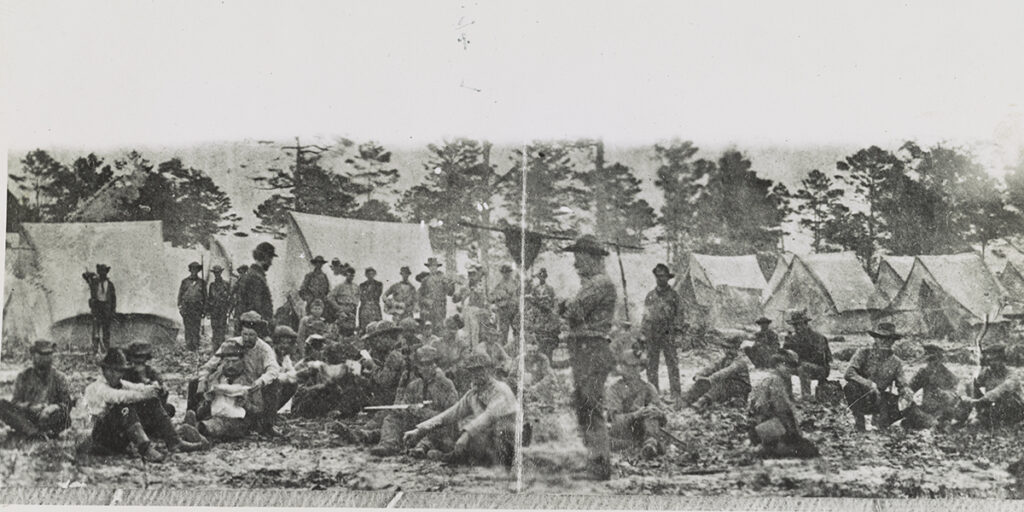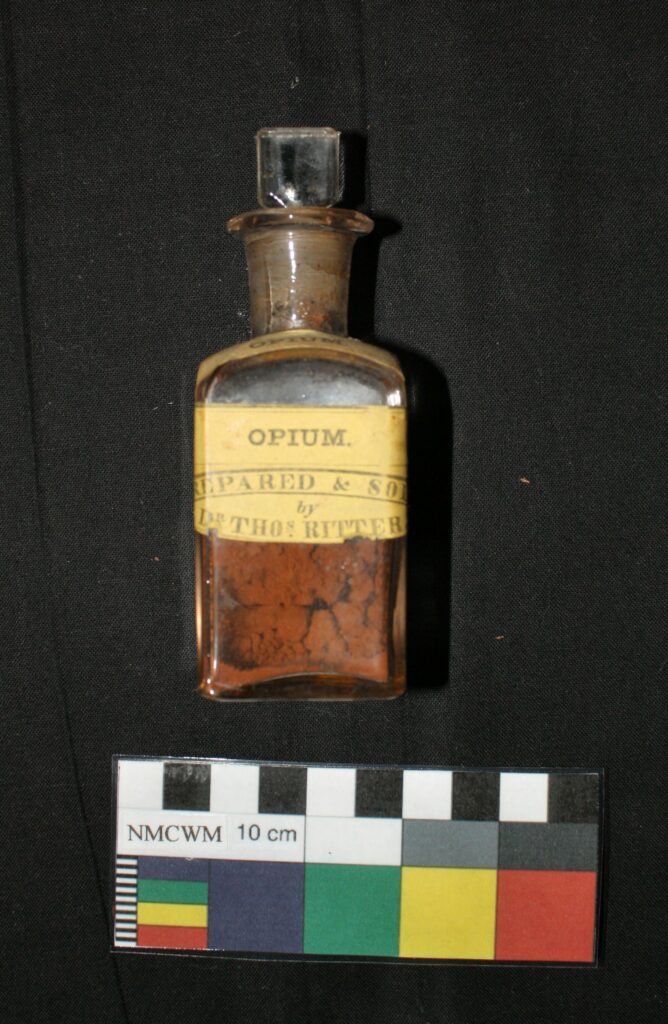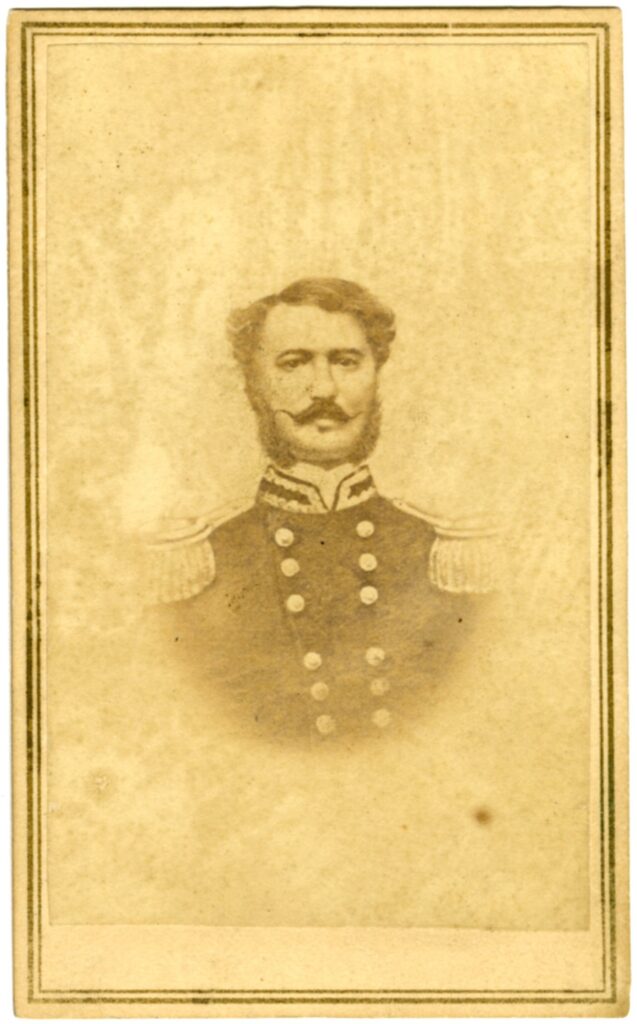Table of Contents
Museum members support scholarship like this.
For four long years, the nation was at war with itself, with over three million serving in both armies. Modern scholarship calculates the death toll for the Civil War to be upwards of 700,000, roughly two thirds of which died from disease. One such disease that widely afflicted these soldiers was typhoid fever.
Typhoid fever, or Salmonella typhi, is an intestinal infection caused by contaminated food or water. Conditions in camp were perfect for the spread of diseases like typhoid fever. The lack of sanitation, improper placement of latrines, and general lack of knowledge of bacteria and germ theory allowed sickness to thrive. These factors in conjunction with the rampant disregard for surgeons’ pleas for proper sanitation and washing by both enlisted soldiers and their officers aided in the spread. As a result, there were 75,148 documented cases of typhoid fever with 27,058 deaths (36% mortality rate) within the Union army. While exact numbers are unknown, the rate is believed to be similar with Confederate and African American soldier’s camps.[1]
Camp diseases were common for both Union and Confederate armies throughout the Civil War, especially as both armies mobilized rapidly at the beginning of the war which created increasingly large camps. Historian H. H. Cunningham notes in Doctors in Gray: The Confederate Medical Service, “Large-scale epidemics of measles, malaria, typhoid fever and other camp diseases early in the war were related to the growing military establishment.”[2]
The mixing of regional and socioeconomic backgrounds aided in the spread of disease while in camp. Soldiers from large cities had been exposed to a variety of diseases commonly seen in the urban setting so they generally fared better. These same diseases were not often encountered by soldiers who came from rural areas causing a lowered immunity.

It is estimated that 2-3% of typhoid fever carriers are asymptomatic[3], meaning their bodies contain the disease but they do not present any symptoms. The presence of asymptomatic carriers in both modern (COVID-19) and Civil War (typhoid fever) life are one of the causes in the spread of airborne or foodborne disease since people can spread disease unknowingly.
Symptoms of typhoid fever commonly include fever, severe generalized malaise (discomfort, illness, uneasiness), and red skin lesions or “rose spots.” Other symptoms of typhoid fever can include a diminished mental function, paralysis of the muscles in the bowel, intestinal dilation or a swollen abdomen (referred to as “adynamia” by 19th century physicians). While a definitive method of diagnosis did not appear until the 20th century, Civil War physicians recorded the symptoms patients presented while also crafting detailed autopsy notes for each patient. The Medical and Surgical History of the War of the Rebellion details procedures, treatments, and practices regarding a host of cases seen by Civil War surgeons with many of those being typhoid fever.
There was no effective treatment for typhoid fever during the Civil War. Instead, surgeons would treat the presented symptoms for each patient. In historian George Worthington Adams’ Doctors in Blue: The Medical History of the Union Army in the Civil War, he provides common treatments for these symptoms. Opiates, turpentine, quinine, capsicum, and ammonia were commonly used along with cupping, blistering, whiskey, brandy, and leeches. While many of these treatments seem outlandish given modern medicinal advancements, they were quite common for Civil War surgeons and physicians.

Surgeon Daniel M. Holt of the 121st New York volunteer regiment recorded the devastation of typhoid fever first hand, “Last night a man died of typhoid fever, and quite a number look as if they would soon follow. Poor fellows, when I see the way in which they lie and the lack of all earthly comforts… I wonder how any get well”[4] He later wrote in his journal noting, “Very little can be done for a man while he lies upon the ground with typhoid fever…When I order one to hospital, it seems almost equivalent to ordering his grave dug.”[5]
Typhoid fever could be devastating to Union and Confederate armies, sometimes causing them to halt an advance or abandon a position. Confederate General John B. Magruder recorded this during the evacuation and subsequent burning of Hampton, Virginia in 1861, “The sickness among the troops is grave… all diseases taking more or less a typhoid in character… Typhoid has been so prevalent and fatal at Jamestown Island as to make the withdrawal of the men from that post necessary.”[6]

Camp life was a breeding ground for sickness during the Civil War, long-term occupations would often lead to an increase in sick soldiers. Dr. Francis M. Wafer of the 108th New York notes in A Surgeon in the Army of the Potomac, “After [Confederate General Robert E.] Lees retreat across the Potomac, the regiment was encamped for nearly a month on Bolivar Heights, which is the elevated land immediately in the rear of Harpers Ferry near the confluence of the Shenandoah with the Potomac. Here it suffered much from sickness, such as Camp Diarrhea, & Typhoid Fever…”[7]
Typhoid fever was just one of the many diseases that afflicted both Union and Confederate troops during the Civil War. In a war where two thirds of deaths were from disease, typhoid fever was among the deadliest. While Civil War surgeons didn’t discover how to cure it, the data and knowledge they left behind in the Medical and Surgical History worked to improve the medical community’s understanding of the sickness. Because of these recordings and medical advancements over the past 150 years, the US has developed two vaccinations against typhoid fever, Ty21a and ViCPS.[8]
Want to learn more? Follow us on Facebook and Twitter to discover more stories from Civil War medicine!
Become a museum member and support our educational programs and research like this.
About the Author
Michael Mahr is a Senior at Gettysburg College from Dover, Massachusetts with a major in History and a minor in Public History, he is also considering adding a second minor in Peace and Justice studies. Michael is the Brian C. Pohanka intern at the National Museum of Civil War Medicine through the College’s Civil War Institute.
Endnotes
[1] Wall text, Camp Life, National Museum of Civil War Medicine, Frederick, MD.
[2] Cunningham, Horace Herndon. Doctors in Gray: The Confederate Medical Service. Baton Rouge: Louisiana State University Press, 1993. Pg. 13
[3] Bollet, Alfred Jay. Civil War Medicine: Challenges and Triumphs. Tucson, AZ: Galen Press, 2002. Pg. 273
[4] Coryell, Janet L., James M. Greiner, James R. Smither, and Janet L. Coryell. A Surgeon’s Civil War The Letters and Diary of Daniel M. Holt, M.D. Ashland: The Kent State University Press, 2012. Pg. 33
[5] Coryell, Janet L., James M. Greiner, James R. Smither, and Janet L. Coryell. A Surgeon’s Civil War The Letters and Diary of Daniel M. Holt, M.D. Ashland: The Kent State University Press, 2012. Pg. 63
[6] Bollet, Alfred Jay. Civil War Medicine: Challenges and Triumphs. Tucson, AZ: Galen Press, 2002. Pg. 275
[7] Wafer, Francis M. Surgeon in the Army of the Potomac, 2008. Pg. 13
[8] “Vaccination.” Centers for Disease Control and Prevention. Centers for Disease Control and Prevention, November 18, 2020. https://www.cdc.gov/typhoid-fever/typhoid-vaccination.html.


